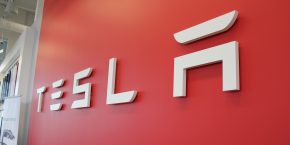

A startup operating mostly in stealth mode for the past 6 years has been developing a very interesting battery-powered vertical take-off and landing (VTOL) aircraft, which could potentially be described as a “flying car”.
Just over two years ago, some early prototypes were spotted at the company’s facility near Google’s X lab, now called the Moonshot factory, which sparked speculation that Google was financing the project. Not much was known about the company then, but we did some research after finding out that it went on a recent hiring spree and we are now bringing you the most up-to-date report on this promising project.
Zee Aero was founded by Professor of Aeronautics and Astronautics at Stanford and former NASA Researcher at Ames Ilan Kroo. He recruited a surprising number of students and colleagues from both organisations to launch his startup, which looks more ready than ever to debut its aircraft.
We’ve heard about flying cars supposedly coming to market for years now. It appears to be one of those “always in the lab” technology and although the term “flying car” could potentially apply to what Zee is working on considering the vehicle is shown in patent applications literally parked in an average looking parking space, simply looking at it as an aircraft is more useful here. Especially considering its differentiating features are almost as impressive on an aircraft as it would be on a car, namely its vertical take-off and landing (VTOL) capacity and more importantly, the fact that it’s powered by a battery pack.
The relatively recent spur of enthusiasm for quadcopters, or drones, has made both these features very common with unmanned aircraft’s, but several technology limitations have made a manned version so far impossible. Anyone who has worked/played with a quadcopter for a while knows that it consumes a lot of energy and you need to frequently swap the battery.
Ehang UAV created some hype with its manned-drone concept at CES earlier this year, but with only a 14,4 kWh battery pack, there are serious doubts about its viability to carry anyone over any meaningful distances. Of course, developing the technology around the propulsion system in order to be ready once the battery power and energy density catches up, which most experts believe to be inevitable, is still a useful endeavor.
https://www.youtube.com/watch?v=RJC-icrChsw&feature=youtu.be
Tesla CEO Elon Musk, who revealed having his own design for a VTOL electric plane, says that such a system becomes possible once battery energy density reaches over 400 Wh/kg, while his Tesla vehicle are believed to be powered by battery cells with ~240 Wh/kg.
In order to improve on the energy front, Zee assembled an in-house team of electrochemists and physicists to build a battery research laboratory and develop custom cells with established manufacturers. Former battery research scientist at GM and now Senior Electrochemical Engineer at Zee Aero Chen Li describes his role at the startup on his LinkedIn profile:
1. Build a battery research laboratory focusing on cell test and electrode characterization;
2. Build a joint battery pilot laboratory with cell manufacturers focusing on battery technology innovation;
3. Lead a joint development with cell manufacturers for high-energy and high-power custom-designed cells;
4. Electrochemical diagnosis and postmortem analysis of custom cells/modules/packs;
5. Development and identification of modeling/simulation tools for cell design, diagnosis and prognosis;
6. Identify and collaborate with cell manufacturers, material suppliers, start-ups and research labs to accelerate the pace of battery technology innovation and maintain these relationships.
7. Develop market landscape of battery supply chain and report on state-of-the-art and nascent battery technologies. Create technology roadmaps by synthesizing data from a variety of sources to identify the short-term and long-term technology trends and drivers.
The startup also hired other experts like Electrochemical Engineer Patrick Herring who holds a PhD in Condensed Matter and Materials Physics from dual advisors at MIT and Harvard University.
The battery management system was designed by former SpaceX Electronics Engineer Drew Eldeen. According to his LinkedIn profile, Zee’s BMS and High Voltage Contactor System is used on 600 V high current battery systems made from Lithium Polymer cells.
As for the aircraft itself, Kroo describes the abstract of it in a 2013 patent:
“A safe, quiet, easy to control, efficient, and compact aircraft configuration is enabled through the combination of multiple vertical lift rotors, tandem wings, and forward thrust propellers. The vertical lift rotors, in combination with a front and rear wing, permits a balancing of the center of lift with the center of gravity for both vertical and horizontal flight. This wing and multiple rotor system has the ability to tolerate a relatively large variation of the payload weight for hover, transition, or cruise flight while also providing vertical thrust redundancy.
The propulsion system uses multiple lift rotors and forward thrust propellers of a small enough size to be shielded from potential blade strike and provide increased perceived and real safety to the passengers. Using multiple independent rotors provides redundancy and the elimination of single point failure modes that can make the vehicle non-operable in flight.”
Drawings attached to the patent show an aircraft with a canard wing design:
One thing that Ehang got right with its manned-drone concept is the autonomous pilot system, which is almost indispensable to personal aircrafts becoming more popular. Zee is also expected to have such a system in its aircraft and hired a Boeing 787 Autopilot Engineer to lead the design.
What is particularly encouraging about the potential of Zee Aero actually bringing a cool product to market is the fact that it managed to bring together very impressive engineering and management teams. On top of the engineers and scientists already mentioned, here are a few mores to give a scope at the talent and experience at Zee:
- PhD John Gallman, a former NASA Ames research scientist, was from 2002 to 2010 Principal Engineer at Cessna. He is now a senior member of Zee’s aerodynamics staff.
- Ian Fernandez, Composites Design Engineer at NASA Ames research scientist from 1998 to 2012, now Airframe Team Lead and Sr. Mechanical Design Engineer at Zee.
- Aerospace Engineer Chinmay Patel. He holds a PhD in Aeronautics and Astronautics from Stanford. Patel did his thesis on an aircraft system that can extract energy from the random turbulence it encounters.
- The company has several other PhDs and engineers on staff, especially from Stanford and NASA.
When Zee was founded, Kroo brought Eric Allison on board as Director of Engineering. He holds a PhD in Aeronautics and Astronautics from Stanford and his thesis was on ultrasonic propulsion. Allison was made CEO last year.
More recently, the startup also hired several engineers and technician from Tesla Motors including Gary Stempler, former Sr. Firmware and Electrical Systems Test Engineer at Tesla, now Sr. Software Engineer at Zee, Curtis Conaway, former battery pack assembly technician at Tesla, now in a similar role at Zee Aero, and several other former design engineers from the electric automaker.
Not long after promoting Allison to CEO, Zee brought in an experienced President: Fred Reid.
Reid spent the last 30 years in the aerospace industry, mostly in executive roles for airlines including President and COO of Delta Air lines, CEO of Virgin America and President of Bombardier’s Flexjet.
The hiring of an experienced businessman as President rather than someone with engineering and design experience generally means a company is closer to commercialize its product. Interestingly, the startup also has been hiring more engineers in tooling and manufacturing roles based on our LinkedIn research.
We will be following Zee.Aero more closely going forward and try to learn more about its technology. Make sure to follow us on Twitter, Facebook or Google+ to get our latest updates.
FTC: We use income earning auto affiliate links. More.






Excellent article. Been wanting to read about the viability of VTOL electric aircraft. I wonder if they are using any supercapacitors for the burst of energy needed for takeoff.
This will never fly far, if at all. Efficiency in lift is everything and how you get it is few large rotors, not a bunch of small ones. The best bet is a tilt wing with 2 rotors or a coaxial 2 rotor above helicopter, controlled like a gyrocopter, will get you farther on less battery, body weight.
That inefficient flight mode is used only at the start and end of its flight. Most of the flight will be “on wing” propelled by the two rear facing props. But the vertical propulsion system is a lot of extra weight to carry during fast forward flight. It will be interesting to see how that affects efficiency when “on wing”.
Try this. You’ve seen those medieval war tools that were used to chuck huge boulders? I’m not getting its name. C something. It has a swing arm that builds momentum fast for about a quarter turn.
So load a plane on it and as soon as it develops full power release it like a boulder. Hire engineers to design the lock and release mechanism.
Ah, no. I don’t know how to land it. Maybe use a cable to grab it’s wheel like on aircraft carriers? Or bounce on a giant trampoline. Let it take off first, eh.
So anyway, if that C machine is too much of a sudden load on internal components and passengers, use the same steam powered machine used to launch planes on carriers.
Cheers.